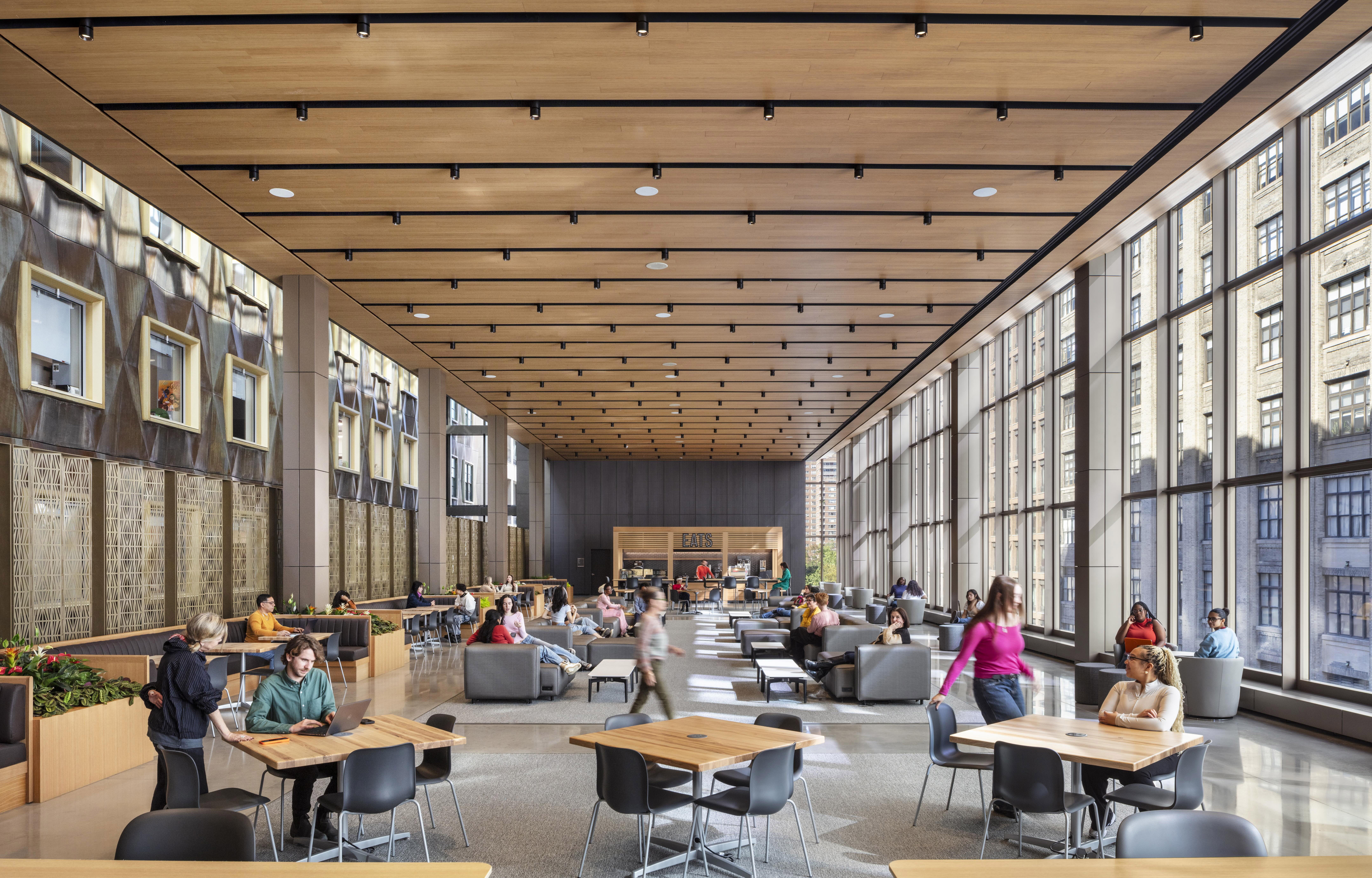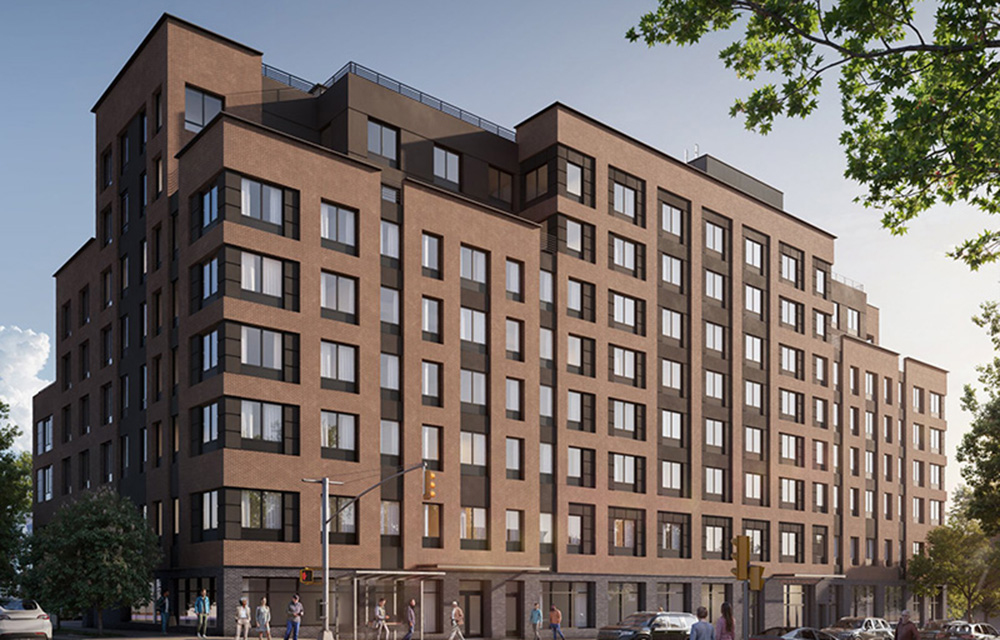Good Bones: Analyzing existing commercial structures for healthcare repositioning - by Rory Creegan

The COVID-19 national emergency unquestionably left us with an altered landscape. While life has returned to normal (or a version of it) for most, there are many aspects of our daily lives and industry that will never be the same. Among these changes is the ongoing ability to work from home.
In January 2023, nearly 30% of all work was performed from home (according to data-collection project WFH Research https://wfhresearch.com/ https://thehill.com/policy/technology/3862069-nearly-30-percent-of-work-remains-remote-as-workers-dig-in/). While this brings to mind a montage of employees in comfortable sweatpants, parents spending more time with children, and healthier lifestyles, it can also conjure a more conflicted image in the real estate world – empty office chairs.
NBC News recently reported that 12.8% of office real estate remains vacant (www.nbcnews.com/business/economy/empty-office-buildings-downtown-what-happened-rcna77443), calling it the highest percentage since the great recession. So, what is a community to do with all of these empty buildings? Healthcare providers have an idea.
As more Americans move their lives closer to home, there is a strong argument to bring their healthcare with them. Outpatient care is expected to grow 16% over the next decade, and established healthcare systems have begun to compete in this “race to convenience” building ambulatory surgery, cancer care, low acuity imaging, and exam centers in the furthest reaches of their geography.
With a quick construction schedule in mind, recently vacated office buildings offer a unique opportunity for a healthcare service to occupy a central location in any community. While the location and size of these buildings may be attractive qualities, a prospective tenant or owner should be forewarned that not every building is perfectly suited to house a healthcare occupancy. In fact, even the most well-appointed buildings will need a fair amount of renovation work to serve a new healthcare program.
The usable floor area and options for new program layout are the first “opportunity for creativity” as the size and shape of an existing building will rarely be an ideal playing field for the modern medical program layouts to which our designers, patients, and staff have become accustomed. Beyond that, there are many infrastructure considerations that should be discussed between the owner and design team in the early stages of considering a building for repositioning.
The following topics are “food for thought” for a prospective tenant or owner looking to occupy an existing structure. Challenges outlined in this article are not meant to be deterrents, as each of these scenarios can be overcome with proper foresight and creative coordination. As always, requirements of a program should be specialized to meet the needs of the owner, staff, and clientele. To that end, this article may be a good starting point, but certainly not a comprehensive list.
Structure:
First, analyze the “bones” of the building itself. Many vacant structures were built as office buildings decades ago. The International Building Code requires the structure of an office building to support 50 pounds per s/f for new office program area, while hospitals require live load support between 40 and 80 pounds per s/f, with 60 pounds per s/f for surgical program. Much can be done to strengthen a structure to support an ambulatory surgery program, but it must be considered that most structural improvements will have severe impacts on the ceiling heights of the floor below.
Many modern outpatient programs attract clientele by providing local access to medical imaging. These programs certainly increase patient traffic but can also have serious structural impacts. A 3T MRI machine could weigh 100-150 pounds per s/f and often requires supplemental steel to support not only the equipment location, but the delivery path as well. For that reason, it is often recommended to keep the imaging program on the lowest floor of an adaptive re-use program.
The roof structure is another area worth exploring. As we will discuss below, the mechanical systems of an older office building may need to be replaced (or heavily supplemented) to meet increased loads and ventilation requirements of most healthcare programs. Most spec office buildings were not constructed with the intention of large equipment on the roof but will soon have to bear the weights of air handlers, chillers, and exhaust fans. For the most part, the quickest and most cost-effective solution may be to install a framework of new dunnage under the proposed equipment, supported by existing column caps.
Imaging:
In addition to the structural implications mentioned above, adding medical imaging to a commercial building requires a closer look at both the room location and equipment requirements. The large machines need dedicated delivery and replacement paths, and the critical nature of the equipment can require supplemental cooling, vibration isolation, uninterrupted power sources, and dedicated exhaust and vent routing.
Mechanical Air Systems:
It should be expected that existing office buildings of a substantial size would be provided with a central mechanical air handling system, perhaps even one that has been properly updated and maintained. Most of these systems will likely be sized between 0.75-1.25 CFM/SF, and most modern healthcare programs require a larger capacity system due to an increased cooling load and an increase in code-required air changes. The upsized air supply system will also require an addition to the cooling and heating infrastructure (chillers and boilers), the size of which heavily depend on the local weather design criteria.
Larger air supply systems also mean larger shaft areas and lower ceilings due to upsized infrastructure pathways. (Sorry, space programmers!) However, there are tips and tricks to minimize this interruption. One item to advocate for is, as strange as it sounds, more shafts! As the infrastructure across a floor is split between additional shafts, ducts and pipes leaving each individual shaft can be reduced in height, allowing for more flexible ceiling features.
Many outpatient services like exam rooms, infusion programs, and offices can be served by a chilled beam system. Chilled beams are ceiling-mounted units that recirculate air in a room over a hydronic tempering coil (both heating and cooling) to maintain the temperature in a space. Since the space is mainly tempered by this recirculated air, the ductwork from the roof or mechanical room can be reduced to only carry ventilation air, reducing the duct size by 60-70% and offering more favorable shaft sizes and ceiling height flexibility.
To offer a deceivingly simple tip – use what’s there! Many older buildings were developed with beam or joist penetrations to weave the original infrastructure through to areas of service. If a new design can re-use even a portion of these pathways, it could mean a significant increase in proposed ceiling height.
Perimeter Heating Systems:
While the cooling load in a repositioned healthcare building will likely increase, the heating load may remain within a similar range. There are many potential space programs that do not require upgrades to perimeter heating, such as office and research areas. However, the fin tube radiators of a commercial space may be infection control nightmares for modern surgical suites and patient recovery areas.
The cleanest solution may be heating by air alone, assuming the façade can be modernized and insulated to support a window facing linear diffuser. In scenarios where this approach is not enough to combat the infiltration or peak of winter conditions, a radiant panel may offer desired occupant comfort without the worry of collecting debris or infectious particles.
Power Density:
Unless the new program consists of only exam rooms and offices, the power density in a repositioned building should expect an increase. An office floor plate is typically provided with approximately six watts per s/f for lighting and receptacles, while a healthcare occupancy could require 10-20 watts per s/f for the same area.
The increased capacity of electrical infrastructure requires more physical space, including incoming service rooms (typically on the lowest level), and distribution rooms. One way to curb a potential increase in vertical pathways, and therefore decrease shaft space and conduit, is to separate the building into upper and lower house distribution. While separating into two distribution centers may increase the quantity of some equipment (transformers, etc.) the total quantity of panels will remain approximately the same. This approach can save on long lengths of distribution wiring, whose fluctuating price has been a burden to many projects in recent years.
Emergency power density is another item that begs further consideration. An office space might only require emergency power for fire services and egress lighting. Depending on the program, there is a huge variation in healthcare program requirements – but the load will almost certainly increase. Surgical and recovery units will likely require three branches of power per NEC (NFPA 70), and many patient safety loads to be added to an emergency power source. Cooling and heating systems serving critical areas should also be considered additions to the building emergency load.
Typically, a new generator is required to serve these needs. In an urban setting, this generator may need to sit on the roof and require additional dunnage (see Structure section above). In a more suburban or rural setting, a generator may be mounted on grade adjacent to the building structure.
A note regarding electrification: as many design teams and project goals move away from fossil fuels, there is a tendency to think of air-cooled systems (chillers and heat pumps) as a cure-all solution. These systems should be celebrated for the way they provide comfortable space conditions without burning fuel, as well as their user-friendly layouts, redundancy, and simple maintenance. However, a designer or owner needs to make the upgrading of the electrical system a priority to support such a change in infrastructure (in both owner and tenant scenarios). A change to air source heating and cooling could increase mechanical equipment power loads, in some cases tripling them.
Fuel Oil/Natural Gas:
On-site energy sources can be found in some existing commercial properties, but their sizes and capacities must be studied alongside the proposed infrastructure requirements they plan to serve. The emergency power system (see Power Density section above) may operate from a separate fuel oil or natural gas tank or may employ a packaged “belly tank” constructed in the factory. The Facility Guidelines Institute (FGI) requires a backup heating source for several program types, including surgery. A building owner may have further preferences for heating and cooling backup for operational reasons. Stand-alone fuel oil tanks benefit from being grade-mounted, basement-mounted, or buried due to their immense size and weight.
Medical Gas:
It would be quite surprising to stumble upon a non-medical commercial building with an existing medical gas infrastructure (but it would be nice, once in a while). For that reason, these systems are typically considered a new addition as part of a renovation.
For an on-site surgical suite, a bulk oxygen tank on grade adjacent to the building is often the most elegant solution. For lower acuity spaces, mobile oxygen tanks could be employed based on staff operations and procedures.
Nitrogen, nitrous, or carbon dioxide may also be required, either to meet FGI regulations or operational needs. These gases can typically be provided from a common tank manifold room, which should be programmed to be located in the vicinity of a loading dock for tank delivery and replacement. Vertical piping pathways are required to bring the gases to their point of use in the program space.
Conclusion:
While there are many differing requirements between commercial and healthcare programs, there are more potential solutions than there are potential challenges. As the current lifestyle of the American people evolves into something more local, so must the layout of the American healthcare system. In this effort, there is nothing more important than consistent (and early) contact and discussion between an owner and their design team. Creative owners, architects, engineers, and designers are in the business of problem solving to improve the lives of those around us, and the current cultural shifts provide boundless opportunity.
Rory Creegan, PE is a principal at AKF with offices across North America.
Troutbrook expands with boutique condo project and Marriott Fairfield Inn & Suites renovation








.gif)
.jpg)
.gif)
.gif)